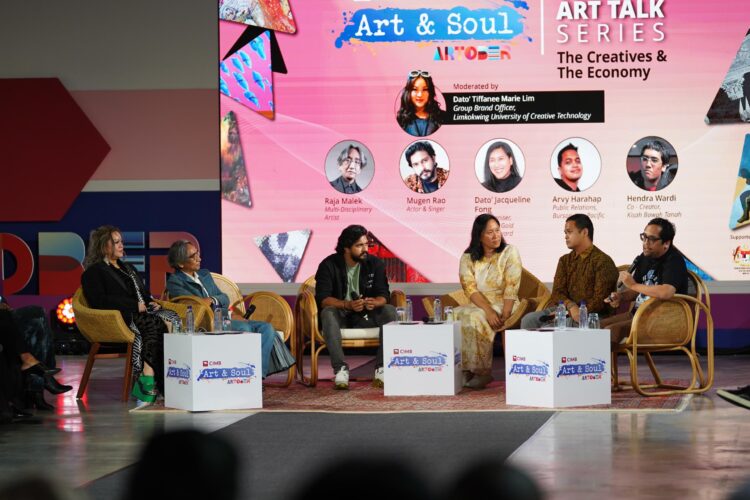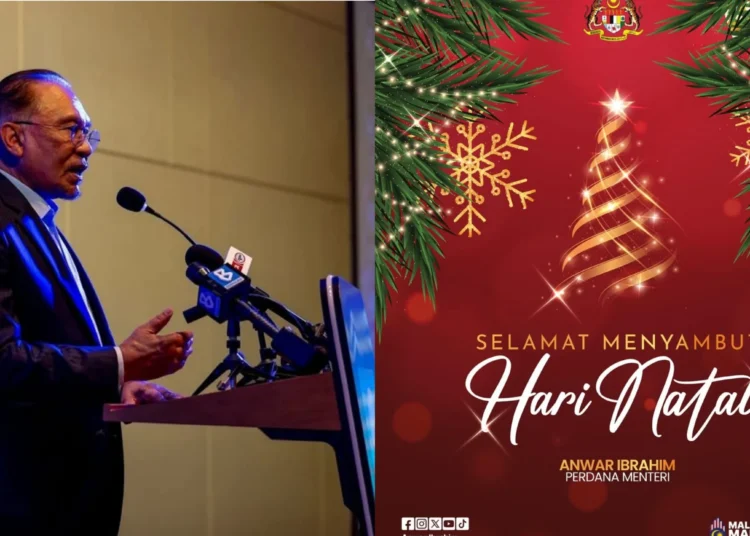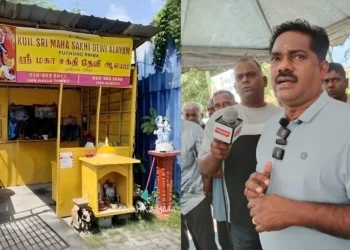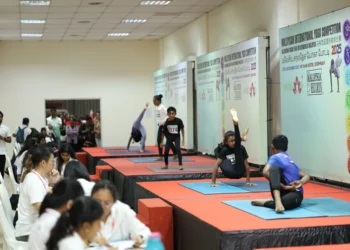A diverse panel of experts from various artistic disciplines gathered at Art Talk – The Creatives and The Economy, hosted by Limkokwing University as part of the CIMB Artober Art & Soul event, emphasising that art should not be sidelined in an era where creativity and culture play a vital role in driving economic growth, underscoring the critical need to support the creative economy.
Moderated by Datuk Tiffanee Marie, Group Chief Brand Officer of Limkokwing University and a prominent figure in the education and art sectors, the event featured a dynamic mix of voices, including Datuk Jacqueline Fong, entrepreneur and co-founder of Tanoti; legendary multi-disciplinary artist Raja Malek; public relations specialist Arvy Harahap; Malaysia-born singer and actor Mugen Rao; and co-creator of Kisah Bawah Tanah Hendra Wardi.

post-show discussion. — Picture by Limkokwing
The discussion highlighted the crucial impact of creativity in defining cultural identity and driving economic growth. The panelists unanimously agreed that nurturing the creative economy is vital for preserving Malaysia’s rich heritage and ensuring that artists and artisans receive the necessary support to succeed.
During the talk, Fong noted that in 2022, Malaysia’s handicraft industry recorded sales of RM281 million, generated by around 6,000 registered artisans under Kraftangan. She emphasized, however, that this figure reflects an industry facing economic challenges, as many of these artisans collectively earn below the poverty line, raising serious concerns about their livelihoods.
“Despite government and Kraftangan efforts to support the sector, there is a pressing need for Malaysians to engage directly with local crafts. Supporting craft artisans isn’t just about preserving culture; it’s about ensuring a sustainable income for these creators. Without this support, we risk losing access to traditional crafts like batik which may become rare in the future,” Fong stated.
Arvy Harahap, a public relations expert and former Communications Manager for Twitter in Southeast Asia, emphasized the significance of collaboration within the creative industry.

Officer of Limkokwing University, multi-disciplinary artist Raja Malek, Malaysia-born
singer and actor Mugen Rao, entrepreneur and co-founder of Tanoti Datuk Jacqueline
Fong, public relations specialist Arvy Harahap and co-creator of Kisah Bawah Tanah
Hendra Wardi. — Picture by Limkokwing.
He remarked, “Your network is your net worth,” stressing the need for crafters and companies to work together. Arvy also underscored the significance of listening to ideas from all generations, from Gen Z to millennials and boomers alike.
He stressed the importance of supporting local products to build a strong creative economy, encouraging both businesses and consumers to prioritize homegrown talent and craftsmanship. The panelists highlighted that fostering the creative economy is a shared responsibility, ensuring artists, artisans, and cultural practitioners are recognized as essential contributors to Malaysia’s cultural and economic landscape. He explained that by investing in local products and talent, we can preserve our rich heritage while also boosting economic growth.
Mugen Rao spoke passionately about the influence his father had on his appreciation for the arts, urging youths to embrace their talents with confidence and dedication. “Art forms like dance and singing are integral to our cultural fabric, and I encourage young people to nurture their creative skills,” he emphasised.
Raja Malek, a celebrated multi-disciplinary artist, shared insights into the transformative power of art in society. He asserted, “Art is not merely a profession; it’s a vital part of our identity and heritage that deserves recognition and investment.”
Hendra Wardi spoke about the commitment needed to thrive in the creative field, sharing his six-year journey of perseverance in bringing his cartoon vision to life. “It’s not only about having a dream; it’s about the persistence and effort required to make it a reality. Each setback taught me valuable lessons, and I believe that dedication can transform dreams into achievable goals,” he reflected. He urged for more initiatives to spotlight local talent, stressing that the arts can stimulate economic growth and build community connections. “When we support our artists, we’re investing in our future,” he affirmed.
Datuk Tiffanee Marie wrapped up the session by highlighting the importance of supportive government policies to foster growth in the creative sector.
“For the creative economy to thrive, we must create an ecosystem that encourages innovation and collaboration. This includes proper funding and policies that empower artists and artisans to explore their potential. Furthermore, we must advocate for a ‘Buy Local’ initiative, which is essential for sustaining our creative industries and ensuring that local products gain the recognition they deserve. We must recognise the value of the creative industry not just in terms of cultural heritage but also its economic impact,” she said.
Tiffanee emphasized the significant impact Limkokwing University has had on developing Malaysia’s creative economy since 1991. She noted that the university remains dedicated to cultivating talent as the industry grows with global events like Artober.
“With four out of six panelists being Limkokwing graduates, our alumni are excelling across global industries, demonstrating the values and skills honed here. It’s inspiring to see them leading and innovating in fields ranging from arts and entertainment to public relations and entrepreneurship,” she said.

post-show discussion. — Picture by Limkokwing
One recent example is Malaysian designer Alvin Tam, who created a Balenciaga handbag featuring built-in speakers—a remarkable blend of style and functionality that reflects the university’s global vision. Tiffanee highlighted that Limkokwing acts as a driving force for the creative economy, with graduates from diverse fields achieving international recognition, underscoring the university’s substantial influence.
The third edition of CIMB Artober Art & Soul presented an impressive array of over 1,000 artworks by more than 100 artists, curated by 20 local galleries including Galeri Puteh, G13 Gallery, Zhan Art Space, Taksu, Sareng, and Segaris, among others. During the fair, students from Limkokwing University and Universiti Teknologi MARA (UiTM) took the stage for an inspiring fashion show, showcasing designs that blended creativity with cultural influences. Their work reflected an innovative spirit and commitment to Malaysia’s dynamic fashion industry, adding an exciting layer of youth-driven artistry to the event. The fair took place at the Malaysia International Trade and Exhibition Centre (MITEC) in Kuala Lumpur from October 25-27.
All the images and information are provided by Limkokwing university.
Follow us on Instagram, Facebook or Telegram for more updates and breaking news.








